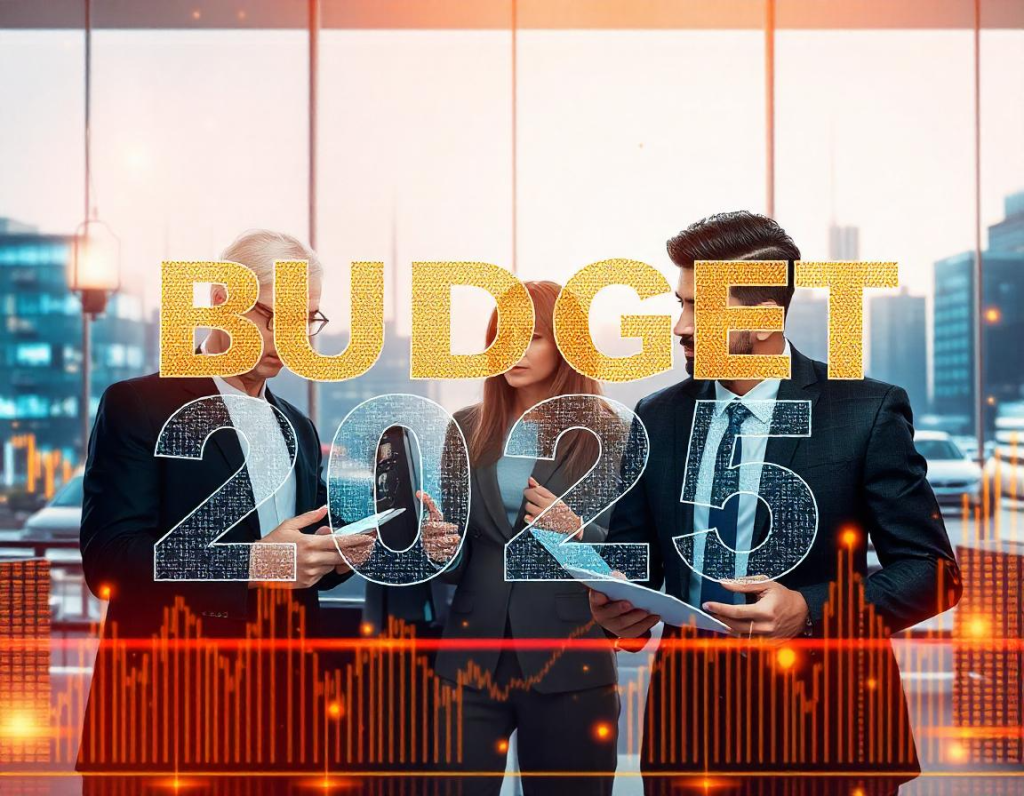Union Budget 2025-26: Important Highlights and Its Assessment

February 1, 2025, was the day when FM Smt. Nirmala Sitharaman placed the Union Budget 2025-26 fiscal year. As the country steadily recovers from the after-effects of the pandemic while navigating through global economic volatility, this budget arrives during a critical juncture. The areas of most importance based on the budget are tax reforms, agriculture, infrastructure development, research and innovation, and trade and manufacturing productivity.
Union Budget: Income Tax Changes
- Tax Exemption Limit Increase: Reducing the tax burden on middle-class earners is one of the most important announcements – raising the tax exemption limit to ₹ 12 Lakh under the new tax regime. The anticipated outcome is increased disposable income and higher consumer spending for the economy.
- Tax Changes in Other Income: There is further good news for salaried taxpayers as the income tax slabs have been altered which increase the threshold amount. The restructured income tax will be more favorable towards new regime, which is sought by the government since the last several years.
- Increase in Standard Deduction: Further tax cuts will be available as the standard deduction for salaried employees and pensioners has increased.
Agricultural Initiatives
Within the union budget 2025, there is a new scheme to establish 100 agricultural centers which will directly aid 1.7 crore farmers. This will help develop the practices of farming within the nation and increase productivity along with the income of farmers. The initiative is referred to as the Prime Minister Dhan-Dhaanya Krishi Yojana and it aims to modernize agricultural practices.
- Enhanced Credit Access: Through the Kisan Credit Card (KCC) scheme, 7.7 crore farmers, fishermen, and dairy farmers are provided with short term loans that go up to Rs. 5 lakh. This ensures farmers have timely access to credit and reduces their dependency on unsanctioned loans.
- Pulses Self-Reliance Mission: A mission has been initiated which spans over six years that focuses on aiding the nation to reach self-sufficiency when it comes to the production of specific pulses such as Tur, Urad, and Masoor dal. This initiative is a way to maintain the nation’s food security without having to relay too much on import.
Infrastructure and Economic Growth
- Increased Capital Expenditure: The government has set a new record by allocating Rs. 12 Lakhs Crore for capital expenditures which focuses on the development of railways, highways, and other urban constructions.
- Affordable Housing: The union budget widens the funding for Pradhan Mantri Awas Yojana (PMAY) to provide lower and middle income families with assurable housing.
- Green Energy Investments: There have been new additions to solar power, electric vehicle infrastructure, and hydrogen energy while keeping in mind India’s net zero goals.
Research and Innovation
- Private Sector-Led R&D: ₹20,000 crore has been set aside for private sector-led research and development efforts, to stimulate new developments in artificial intelligence, biotechnology, and semiconductor technology.
- PM Research Fellowship: Fellowships with a value of up to 10,000 will be awarded for high-end technological research work conducted at IITs, IISc, and equivalent institutes, to stimulate innovation.
- Second Gene Bank Establishment: The proposed establishment of the second gene bank with over 1 million germplasm lines aims to safeguard genetic variation and improve food supply security.
Export Promotion and Trade Facilitation
- Incentives for Electronics and EVs: The exemption of import duties on the components for LED/LCD TVs, and capital goods for lithium-ion batteries will lower the cost of production for electronics and electric vehicles.
- Maritime Sector Support: Granting of a 10-year tax holiday on activities related to domestic shipbuilding and shipbreaking will stimulate the local ship building industry.
- Trade Facilitation Measures: Enhanced facilitation for exporters, including the new optional system for post clearance amendments, will reduce compliance burdens and improve trading efficiency.
Market Reactions and Economic Implications
- Stock Market Response: The union budget was met by an equally divided market. Consumer spending and income increased, which saw rallies in the consumer goods and automobile sectors, but growth in infrastructure and spending capital yielded a negative response from infrastructural investment equities.
- Effects on the Middle Class and Economic Growth: Middle-class households stand to benefit from tax cuts and incentives, as the extra spending and savings will contribute positively to their standard of living. Moreover, small businesses and startups are set to benefit from advances in credit and R&D expenditures.
- Advanced Economic Data Research: A combination of infrastructural spending and R&D tax credit spending is likely to contribute positively to the GDP growth of India, allowing it to breach the 7% threshold during the next fiscal year.
Final Words
The Union Budget 2025-26 covers broad areas every India citizen concerns about, such as tax cuts and relief, agricultural reform, infrastructure spending, and enabling growth through research and development. This allows the government to cater to the needs of the middle class, increase exports and private sector controlled research, foster economic growth without having to sacrifice stability. Concerns arise regarding particular allocations from some sectors, but the overarching sentiment of the budget is that is aims towards growth and enhancing future prospects.
Read full story here!
Follow Headline Forge for more article like this!


